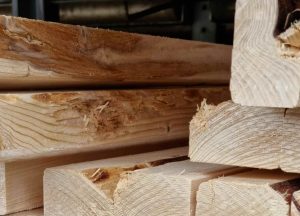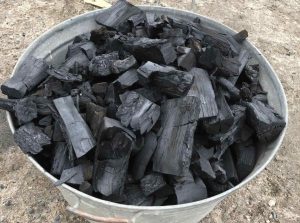A draft of the EU commission’s upcoming forest strategy about future forests has leaked. The Swedish daily tabloid “Dagens Nyheter”, DN, made the forest community in Sweden aware of this. It´s a draft for a strategy for forests within the EU, but with a hope that it should spread globally.
Future forests according to the EU commission
In the article, (in Swedish) DN choose to link to the leaked draft. Without mentioning how the leak itself occurred, it´s worth mentioning that this is a draft and nothing else. We will try to keep you updated on what will happen in this matter.
Why a strategy for future forests?
According to the EU commission, wealthy and resistant forests are matters of fate for the climate. We have heard it before, it´s about adapting forestry to climate change as wind, fire, drought, floods and insects can cause major damages to the forest. There is also a risk that damaged forests affect the climate through, among other things, reduced growth. This is something that the EU commission seems to work hard on to avoid.
The “cascade principle” is emphasized
The cascade principle was launched a few years ago in the first forestry strategy. It classifies products from the forest in descending order due to how important they are from a climate point of view. Wood, sawn timber/lumber is often seen as the most important product from the forest and shall be awarded according to the draft. More sawn timber must be produced in the EU forests.
The classification is made due to life span, that is how long it takes before the carbon in the product is let out into the atmosphere. But also how the product is intended to be used considering recycling. Sawn timber has been given the life span 35 years, panels 25 years and paper 2 years.
The draft suggests that a drastic displacement from today’s short-lived end products towards more long-lived ones must be made in future forestry. Also, the EU commission think that the forest industry must adapt to the forest, not as today when the forest is adapted to the industry. The forest industry shall also adapt to produce more long-lived products like more sawn timber from poor quality and from hardwoods.
Photo: Fredrik Reuter
Building with wood is highly recommended. According to the draft, only 3 % is built with wood today and the potential to increase that is huge, and thereby replace carbon dioxide products like concrete and steel. Furthermore, this means that you keep the carbon storage for a long time by moving the carbon from the forest to the buildings. In the meantime, new carbon storage is created in the new forest.
Bioenergy directly from the forest is not recommendable according to the draft. It´s ok only if byproducts from the sawmilling industry is used, such as sawdust.
Clear-cuts forbidden
In the draft, the EU commission think that clear-cuts let out too much carbon dioxide. Therefore, they claim that clear-cutting is not a method to use in future forests. There might be exceptions, but on the other hand the draft mentions that there are countries that have managed to minimize clear-cuts in their forestry.
Photo: Unsplash
Continuous forestry could be used instead in the future. It´s suggested that clear-cuts should be forbidden, unless “it´s proven that it is necessary for eco-system- or for environmental reasons”. Furthermore, a total stop of forestry activities during the breeding season for birds is suggested. Also, heavy forest machinery, that could cause soil compaction, should be avoided in the future forests.
More mixed and broad-leaved forests
The draft states that monocultures are less resistant and have less biodiversity than mixed forests. Moreover, it is considered that it may be justified to promote more broad leaf in the EU forests. This in combination with choosing species with different biotic and abiotic sensitivity. A regulation of game stock may also be needed according to the draft.
Close-to-nature forestry with EU certificate
In the draft about future forests, there is a section on “Close-To-Nature forestry”. This type of forestry is a type where the forest itself, in many ways, decides its development, and a quest for high nature values. One idea is that Close-To-Nature forestry could replace today’s division in protected forest and production forest. The draft suggests a future system where forest owners should be able to certify their Close-To-Nature forestry. Exactly how is however not clear.
Paid carbon storage
As we wrote in the article about the EU Taxonomy, the EU commission works towards that the forest owners should be paid for the carbon storage that their forest creates by growing. One whole section of the draft is dedicated to the forest owner’s financial future and the fact that profitability is important for development. Apart from looking at a certificate that make it possible to sell carbon storage, a changed CAP (Common Agriculture Policy) where more is dedicated to the forest for special provisions such as water protection or biotope areas.
Photo: Skogsforum.se
Wealthy forest owners are essential for the future forests according to the draft. The fact that the proposals in the draft causes confusion considering how the forests are managed today is also mentioned. Here, the EU commission believes that they will succeed by offering further sources of income to the forest owners, such as carbon storage and nature tourism, in combination with timber sales. Timber sales from continuous forestry without clear-cuts.
The key issue – the climate
As being a Swede, active within Swedish forestry, one can say that this draft for strategies in the future forests do not fit the Swedish forestry at all. The Swedish forestry is driven by the pulp- and paper industry. Some 80 % of the wood from Swedish forests goes to paper production, and the main method is clear cutting. This means that an overwhelming majority of our forestry would have to change, or close.
There is room for interpretation in the draft. Maybe Sweden can get away with the fact that we rarely cut completely clear. According to the FSC certificate (that most Swedish forest companies are bound to) we leave at least 10 trees per hectare, preferably broad leaf. We also leave wet areas and groups of trees to decrease the sense of “emptiness” on the sites. This may be something to work on to keep the industry going? In any case there will be huge changes for us if this comes true.
It seems that there is panic in Brussels (the EU capital). If we don´t make big changes now, there might be no forests left to manage in the future. Right or wrong? Well, that could for sure be discussed. The EU has with its Green Deal set the goal and take the climate crisis seriously. To be able to change their minds in issues on climate and forestry, it is the climate issue that must be discussed.
The public, the consumers, the buyers of the products that come from the forest, everybody! How do we live and how much are we willing to change our lifestyles and ideals for the climate? It´s easy to say things and make promises, but do we live up to that?
Changes are already here
There are signs showing that changes are coming and partly already are here. Kimberly Clark has started to avoid buying timber from boreal forests, Essity is testing to make pulp from straw in Mannheim, Germany, to mention two examples.
Money rules the World and the consumers (often without knowing it) have a great power when they choose what to buy or not. All producers must adapt to that. Now, the 2000-generation is entering the stage as new consumers. What we older people has done before is not so interesting. The question is: What choices will the new consumers do? How does it affect forestry and how do we deal with that?
This is a summary of an article signed Fredrik Reuter at iSkogen.se.














